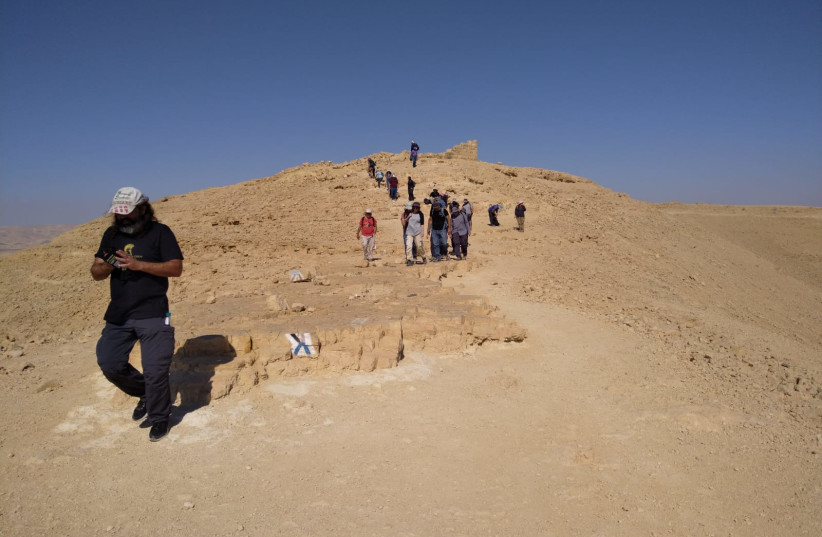Roman soldiers’ 1,600-year-old oil lamp found by high schooler
A lamp that lit up the nights for Roman soldiers guarding a fort on the Scorpions Ascent in the south along an important ancient trade route over which copper and possibly gold were transported was discovered 90 years ago. Now, on the same exact spot, a 16-year-old high school pupil on a school trip has found a second one.
Yonatan Frankel, a pupil from the Tamar High School in Hod Hasharon, was with his class on an annual field trip along the Scorpions Ascent. When his class stopped for lunch next to the Late Roman fort of Mezad Tzafir, he began to pick up rocks from the sand to look at them. “One of the stones that I picked up was full of earth. I shook it off, and suddenly I saw a design. Then, I understood that this was a man-made object and not just a stone.”
Yonatan brought the lamp to his teacher, who showed it to their guide, who was responsible for leading the group. He ensured that it was transferred to Alex Freiberg of the Israel Antiquities Authority (IAA) as required by law. Yonatan received a certificate of merit for his discovery and good citizenship.
The oil lamp discovered at Mezad Tsafir was produced in Petra, Jordan, in the 4th and 5th centuries CE. When IAA senior researcher Dr. Tali Erickson-Gini saw the lamp, which was only partially intact, she was excited. “Lamps of this type were uncovered at Mezad Hazeva and also at Mamshit, Mezad Yotvata, and Petra.”
Another lamp had previously been discovered
The lamp Yonatan found is identical to one discovered in the same place 90 years ago by the late Reform rabbi and archaeologist Dr. Nelson Glueck, who served as president of Hebrew Union College from 1947 until his death in 1971 in Cincinnati. His pioneering work in biblical archaeology resulted in the discovery of 1,500 ancient sites.

“We know that between the Nabataean-Roman town of Mamshit and the copper mines of Feinan (biblical Punon) in the Central Arava – not far from present-day Moshav ‘En Yahav, a trade route was in use in the 4th-6th centuries CE. In order to secure the shipments of copper and possibly even gold from the mines, a series of forts were built between the head of the Scorpions Ascent and Mezad Hazeva, and Mezad Tsafir was one of these. Mounted patrols guarded the important road. It is easy to imagine the lamp lighting up the darkness in the lonely, isolated fort manned by Roman soldiers, said Erickson-Gini.
“I wish to thank Yonatan for his good citizenship,” said IAA director-general Eli Escuzido. “Every object that is turned over to us is kept by the National Treasures department and each object can shed significant light (as is indeed the case here) about our past.”





Comments are closed.